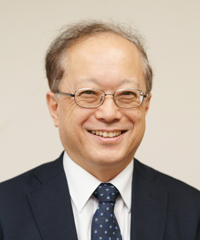I have introduced the topic several times on this blog, but in Japan, overdiagnosis of developmental disabilities, in particular, autism spectrum disorder (ASD), continues to be an ongoing problem. It has been a while since my book* disclosed the situation involving overdiagnosis, and since then, I have been seeing a constant number of outpatients who are children seeking a second opinion after being diagnosed with ASD. Of course, in some cases, the child does have ASD as diagnosed, but when the parents are not at all convinced and unable to accept the diagnosis, the fact is that it often turns out to be an overdiagnosis. Why then is there so much overdiagnosis?
Based on my experience, overdiagnosis is mainly due to misuse of the checklist that was developed to enable early diagnosis of ASD. The Modified Checklist for Autism in Toddlers (M-CHAT™), widely used in Japan in medical checkups of children who are 18 months old, was developed in the United States as a tool for early diagnosis of ASD in toddlers. Early discovery of the possibility of ASD involves answering 23 items on a checklist of the child's behavior. The developers of M-CHAT™ and those who made the Japanese-language version give a very detailed explanation of how to use it. In fact, if carefully followed, it should not be that easy to make an overdiagnosis, but unfortunately, the specialists who diagnosed the children as having ASD have not been following and using the checklist properly, and as a result, the children and their parents later come to me for a second opinion.
What then is the correct way to use M-CHAT™? According to M-CHAT™, when the number of actions and behaviors indicative of normal development of which the child is incapable and the number of behaviors characteristic of ASD are added together, and they exceed a certain number (the cutoff value), the condition can be considered a possible case of ASD. For example, regarding behavior common to normal development, questions such as "Does your child ever use his/her index finger to point, to ask for something?" are asked. On the other hand, for a child with ASD the question would refer to behavior often seen in children with ASD such as "Does your child ever seem oversensitive to noise? (e.g., plugging ears)?"
For a child who scores higher than the cutoff number, the developers of M-CHAT™ recommend conducting a follow-up interview on the child after a certain amount of time, and if the score is higher than the cutoff number for the second time, the child's behavior should be both closely examined by specialists and observed over a period of time to determine whether or not the child should be diagnosed with ASD.
By carefully conducting these two steps (screening and subsequent close examination), we can expect early diagnosis of children who develop ASD and we are actually seeing results.
What percentage of children who test positive (indicative of possibility, not a diagnosis!) according to M-CHAT™ are actually diagnosed as having ASD? This percentage, called positive predictive value, has been reported as approximately 50% in past surveys. I have included these statistics in my book and sounded an alarm that among the children who were considered positive according to M-CHAT™, one out of two did not have autistic spectrum disorder. The reason is that many of the children who came to me for a second opinion had been diagnosed as having autistic spectrum disorder by a doctor on the basis of just one M-CHAT™ or similar screening test (PARS, for example).
Regarding this positive predictive value, some very astonishing research results** have been recently announced in the United States. According to a survey conducted in the state of Utah in the United States, 26,362 children were screened with M-CHAT™ and those who tested positive underwent a follow-up session with specialists.
As a result, when a general pediatrician, who was not a specialist in autism used M-CHAT™, the positive predictive value was a very low rate of 17.8%. Of the children who were screened with M-CHAT™ once or twice in early childhood and diagnosed as positive (704 or 2.4%), only 125 (positive predictive value of 17.8%) were later diagnosed as having ASD by specialists.
Most of the children who came to me for a second opinion had tested positive after a screening that included M-CHAT™, and they were simultaneously diagnosed with ASD. If we apply the survey results from Utah above, over 80% of the children who tested positive in the screening may not have ASD.
The results from the Utah survey cannot be directly applied in Japan, however, under the presumed task of early diagnosis of ASD, we can imagine that many children are undergoing unnecessary treatment and parents are needlessly worried. Thinking about this, I feel something close to anger and that we must do something about this situation.
References:



 Yoichi Sakakihara
Yoichi Sakakihara










